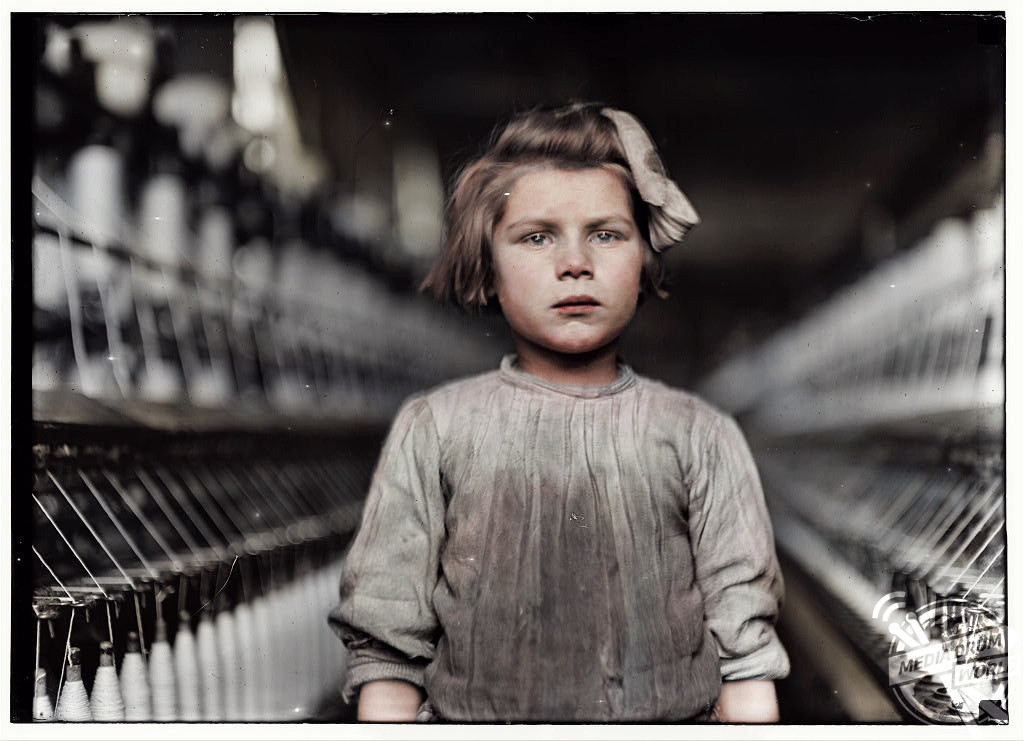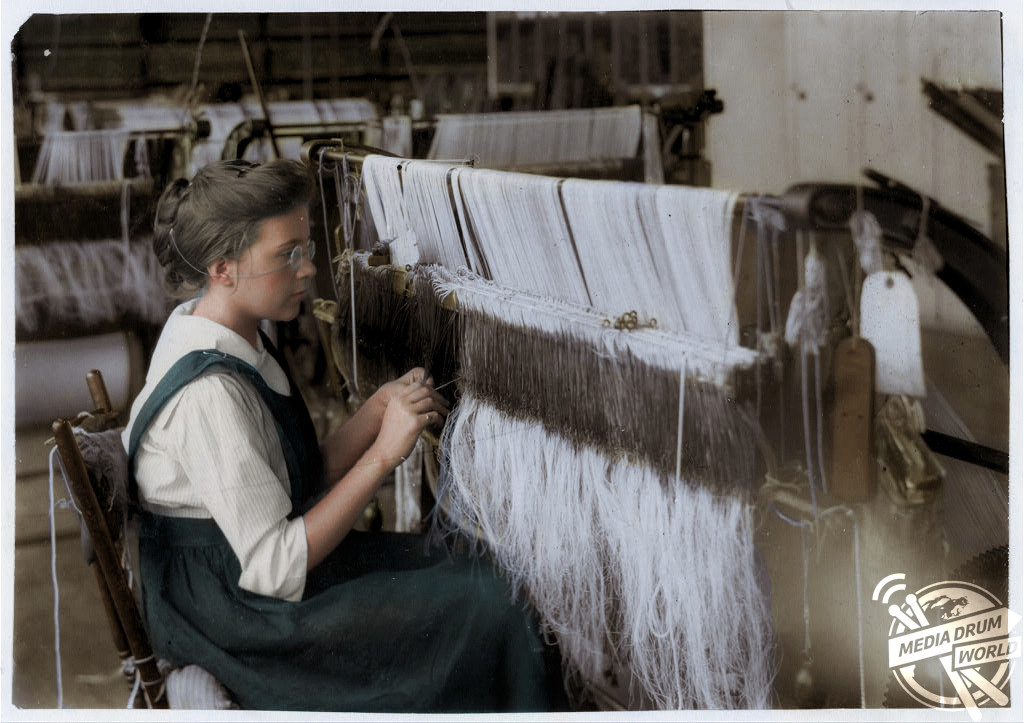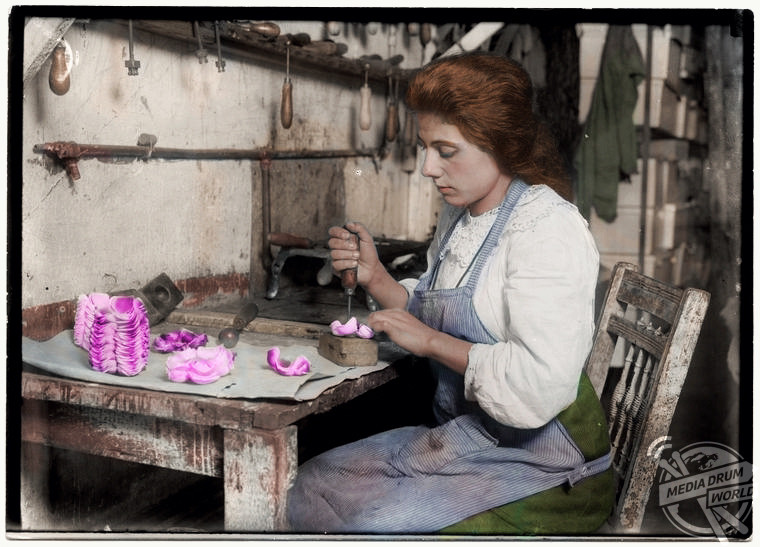
By Tom Dare
THE HAUNTING faces of children forced into manual labour in the early 20th century have been colourised to give a truly personal feel to a tragic series of photos.
Pictures show a 14-year-old Italian girl working in a paper box factory in 1913, while another captures a young girl working on artificial flower petals.
Other images show a young ‘doffer’ outside his place of work supposedly at the age of twelve, although he looks much younger. A doffer was someone that worked in a cotton or wool mill or factory removing bobbins, pirns or spindles from a spinning frame and replacing them with empty ones.

Colouriser Frédéric Duriez, who was responsible for bringing the black and white images to life, has been colourising for three years now.
And he says it was the sadness in the children’s eyes that inspired him to want to work on the images of child labourers.
“I was fascinated by these children portraits,” he said.
“They made me realise that in the past a lot of children were in a great social misery, without any leisure in their lives. They worked young and died miserably young too.
“What struck me most about the photos was the great distress in their eyes. They showed signs of great misery, and their clothes were completely worn out.”

The use of child labour has been hugely popular throughout history, with it often seen as a cheap alternative to paying adults for manual labour.
It wasn’t until 1839 that Britain introduced its first laws restricting the use of child labour, as part of the Factory Act, with most of western Europe following suit by 1890. However, despite some state laws which placed restrictions on its use in America, no federal law restricting the use of child labour was introduced in the United States until 1938.
Today in Britain, children under the age of 13 are restricted from working at all as part of the International Labour Organisation. Children aged 13 to 15 may perform light, non-industrial work so long as it does not hinder their education, and no child under the age of 18 may work in a facility that may jeopardise their safety, health or morals.
“I like to colorize these images of a distant past to bring them closer to our present. They seem more current that way,” said Matt.

“I have good reactions from people, which I was quite surprised about.
“Many tell me that they are impressed by the colors I used, saying that it highlights the characters, which is nice.”
Striking images like these are featured in British author Michael D. Carroll’s new book on the colourisation of historical images. For more information visit: http://carpetbombingculture.co.uk/book/retrographic-historys-most-exciting-images-transformed-into-living-colour/






